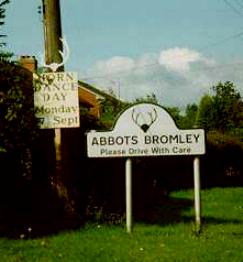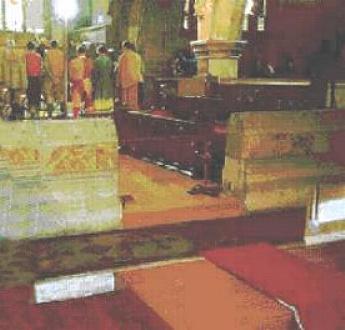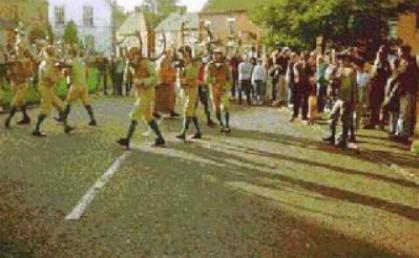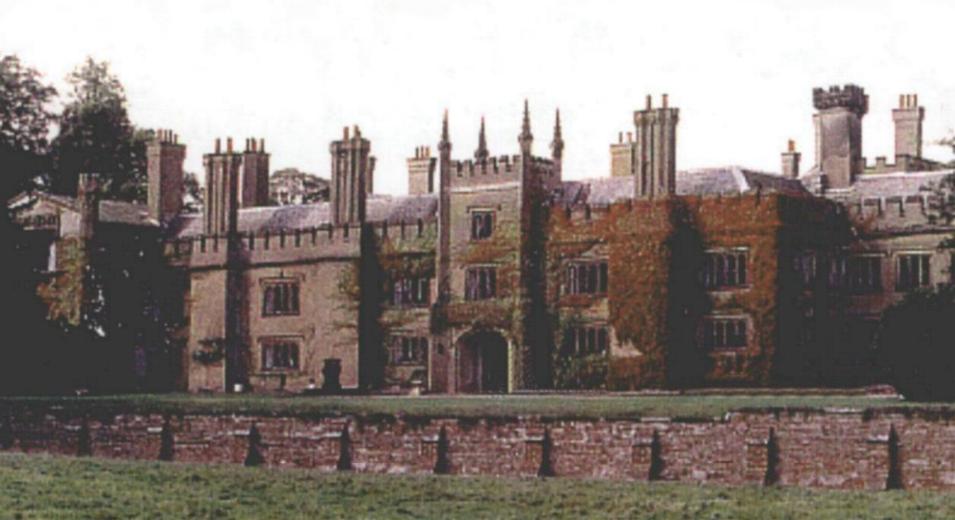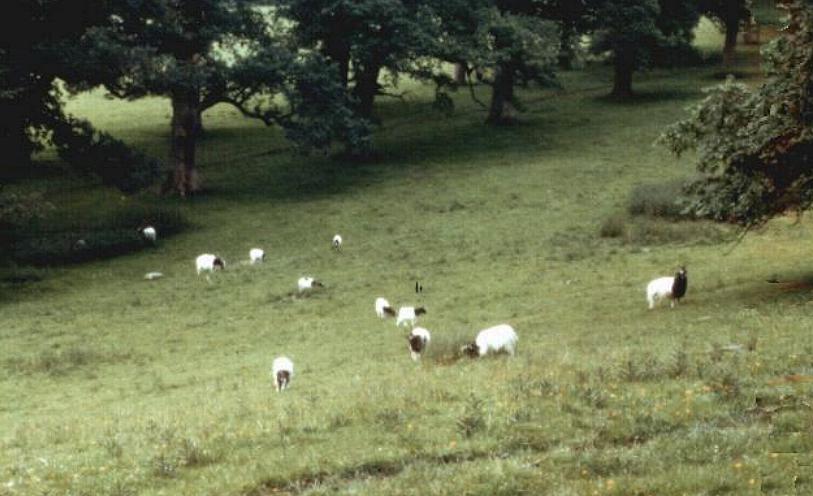The Bagot family's link with Abbot's Bromley is maintained by a performance of the ancient Abbot's Bromley Horn Dance at the Hall each September. The Shell Guide to England reports
Abbot's Bromley as having five inns, a cluster of old black-and-white cottages,
a church with fourteenth century arcades, and an old butter cross, all
of which make Abbot's Bromley one to the most charming villages in the
county.
Twelve people take part in the dance: a man on a hobby horse, a maid, a jester, a bow-man with a bow and arrow, six reindeer men wearing ancient reindeer antlers, and two musicians on accordion and triangle. They enact a mock battle at the climax of the dance. The horns used in the dance are hung on the walls of the north chapel of the parish church. As in times past, with spectators
looking on from inside the church, the dance begins in the church yard
and goes about the streets around the lovely village displaying the band
with a large crowd of spectators following them.
The Shell Guide to England describes
Blithfield Hall as being the home of the Bagot family and their ancestors,
the De Blithfields, for almost 900 years. The present Hall, principally
Elizabethan with Georgian and Regency additions, is open to the public.
The annual Horn Dance is now performed on the lawn in front of Blithfield
Hall. Presumably, the house was enlarged in Elizabethan times; but
the hall is actually older and was the nucleus of the additions. The ceiling
is eighteenth century, and covers the old roof beams of the original building.
The Bagots relocated on the Blithfield estate near Bagot's Park. The front
lawn of historic Blithfield Hall is shown here. The picture below it is
the dance being performed on the front lawn.
Apparently the
goats mentioned were given by the king in return for excellent hunting
enjoyed at Blithfield. The ancestors of these goats were presumably taken
from the Rhône Valley on one of the Crusades and brought back to
England as traveling food. They are called Schwartzhal and are white with
black beards, breast and neck. In the picture below, a herd of these goats
is shown in Leven's Park in Cumbria, England.
The Bagots have been living on
the old Blithfield estate since the fourteenth century. Ralph Bagot married
Elizabeth de Blithfield, who was heiress to the Blithfield estate, and
their children inherited it. Apparently Ralph's parents left Bagot's Bromley
and moved to Blithfield, because most of the history about the family at
Bagot's Bromley ceases at the time Ralph and his family moved to Blithfield.
The original Blithfield estate is situated in a beautiful English countryside, and the picturesque mountain scenery in the summertime explains why the family has lived there for centuries. The beautiful white goats trimmed in black actually add beauty to the mountain scenery. There in a glass case situated at the entrance of Blithfield Hall is a family tree of the Staffordshire Bagots, but now belongs to the Staffordshire Historical Society. The line of Bagots at Bagot's Bromley are the ancestors of Bagots that became Stafford. William Bagot, a cadet of the family, is named in a deed in 1160 with Hervey Fitz Bagod (presumed to be his father). He held two-thirds of a knight's fee from Robert de Stafford in 1166, which has been established as Bagot's Bromley. It was called Bradelie in Domesday. |
